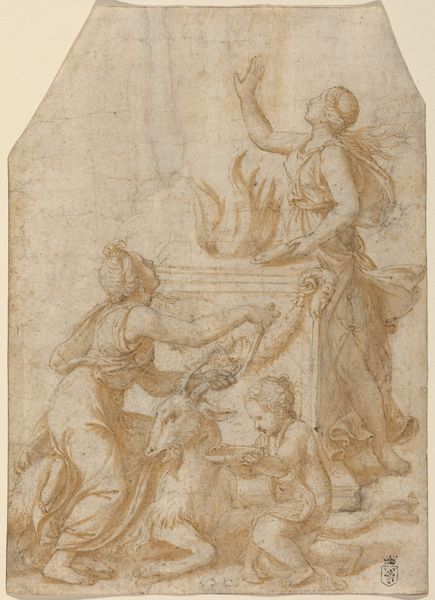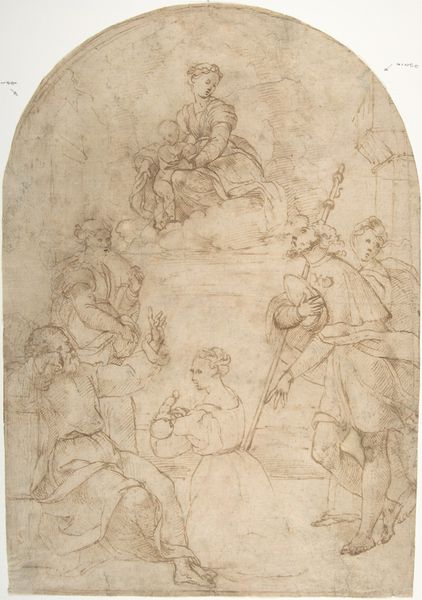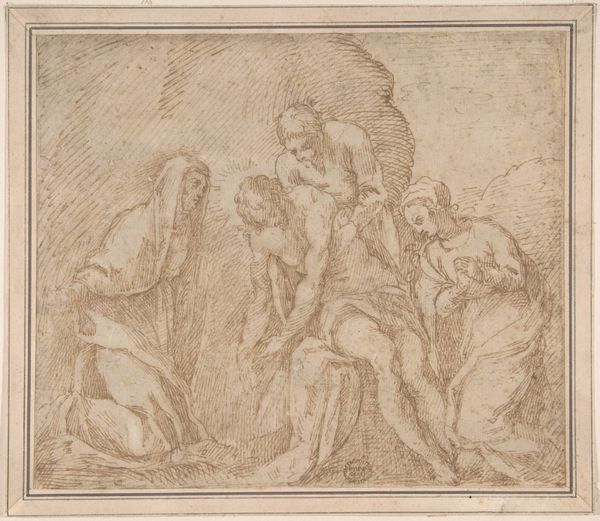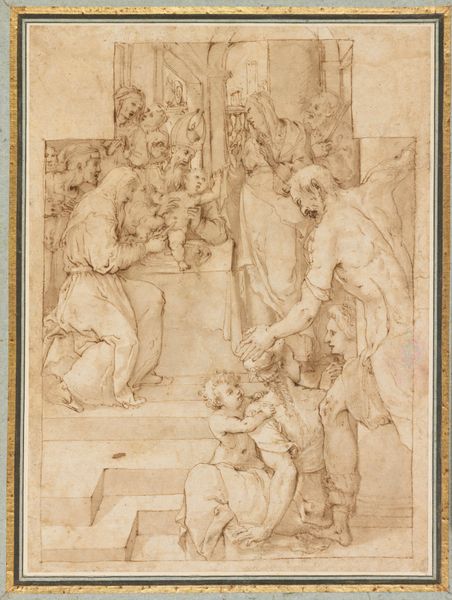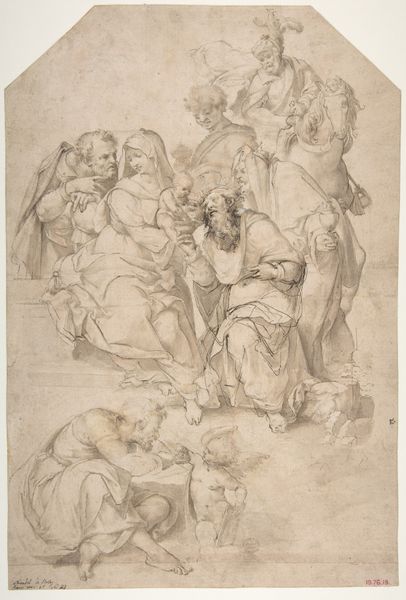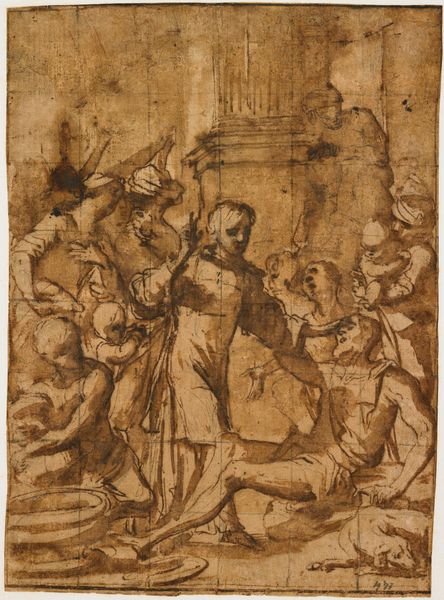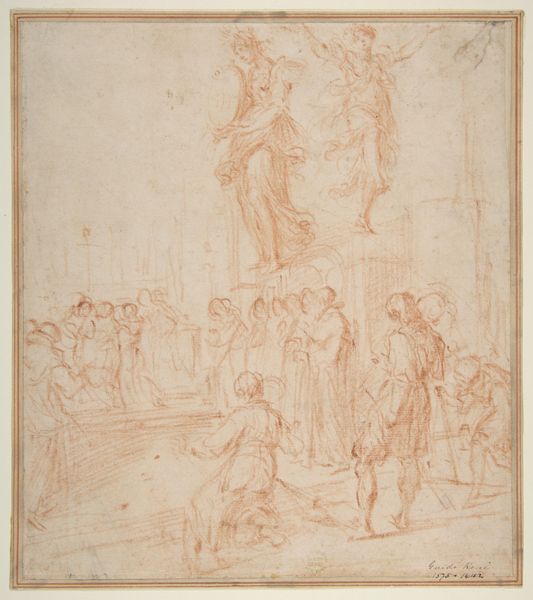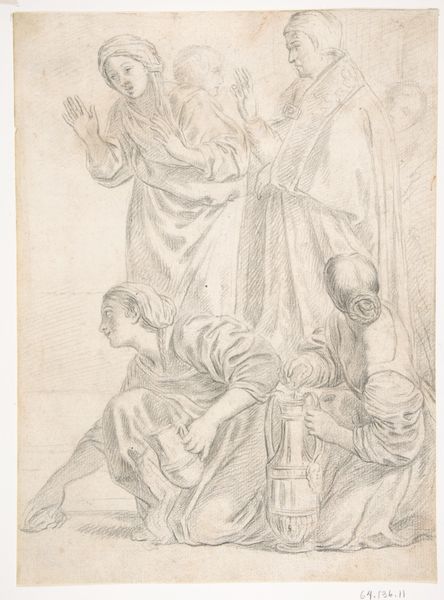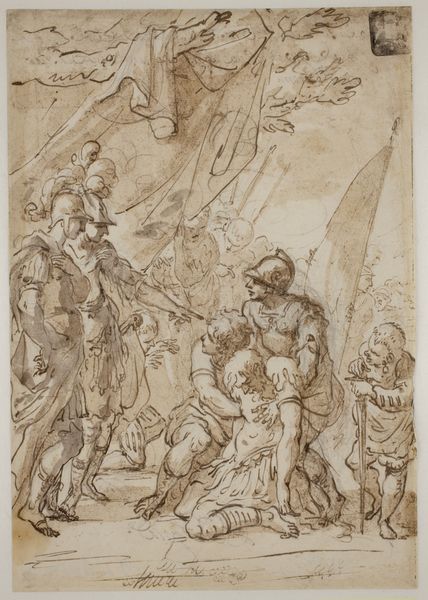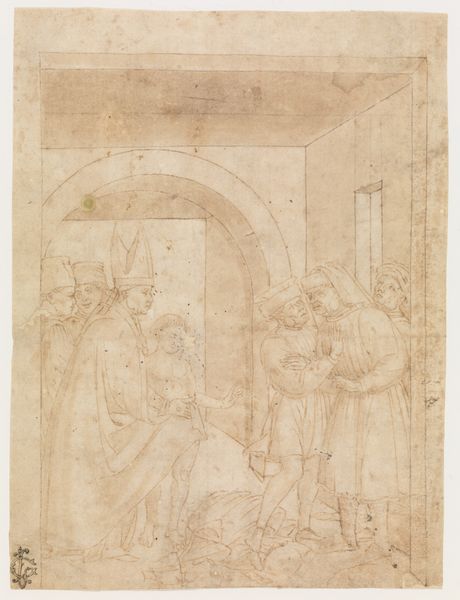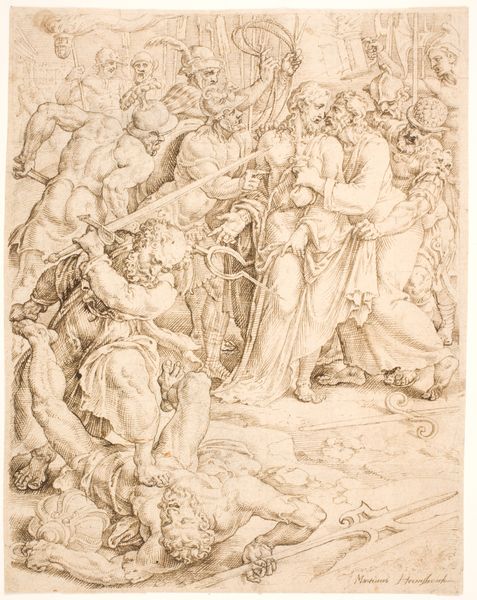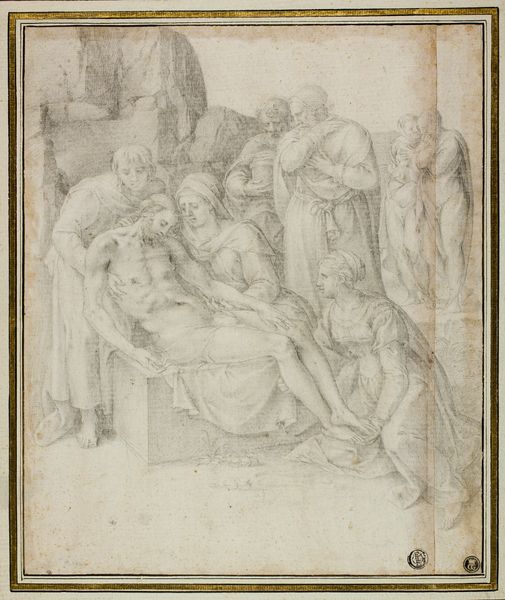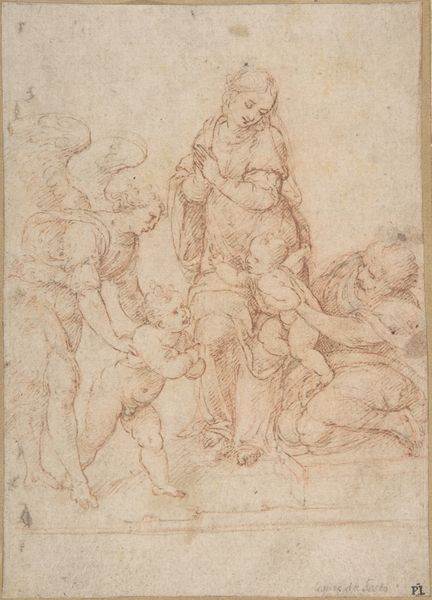
Seated Virgin and Child with Bishop Saint and Monastic Saint, and Saint John the Baptist n.d.
0:00
0:00
drawing, print, paper, ink, pen
#
drawing
# print
#
pencil sketch
#
charcoal drawing
#
figuration
#
paper
#
11_renaissance
#
ink
#
men
#
pen
#
history-painting
Dimensions: 198 × 137 mm
Copyright: Public Domain
Curator: Looking at this detailed sketch, made with pen, ink and pencil, I feel as though I'm observing a dreamlike gathering. Editor: The sepia tones certainly lend it that ethereal quality. It is entitled *Seated Virgin and Child with Bishop Saint and Monastic Saint, and Saint John the Baptist.* What strikes me most is the implied power dynamic – the Virgin elevated, almost floating, above these kneeling figures. It definitely invites a range of possible interpretations. Curator: It’s quite interesting to think about its place within the broader context of Renaissance depictions of power and faith. How did the institutions of the church affect how these images are created, but, more importantly, perceived and felt by the contemporary public? Who had access to these images, what meaning would it communicate to different people based on their class, gender, or even proximity to power. Editor: Those are insightful questions. It certainly highlights the role of religious figures as conduits between the earthly and divine realms, reinforcing hierarchical social structures within the Catholic Church. Campi probably had specific figures in mind when portraying these subjects. The very inclusion, after all, might serve the patron’s aspirations for political influence or spiritual recognition. Curator: Absolutely. Think of the Virgin’s representation, too. She isn't merely a symbol of purity but one of power within a patriarchal system, in effect negotiating social roles in ways we understand much better through, for example, feminist and cultural theory. Campi’s sketch almost serves as a document illustrating those negotiations. Editor: Exactly. These weren’t static representations. It is important to contextualize artworks in the context of ongoing dialogue and influence across history. What this does is broaden our awareness. I've been guilty, perhaps, of thinking only about the socio-economic aspects of creation, overlooking how cultural conversations inform the artistic decisions. Curator: It goes to show that understanding art demands continuous exploration of history and theory, to see where these intersect and conflict and what stories may emerge. Editor: Indeed, and remembering that these narratives keep shifting as we reassess their importance. It all contributes to the artwork's continuing relevance.
Comments
No comments
Be the first to comment and join the conversation on the ultimate creative platform.
